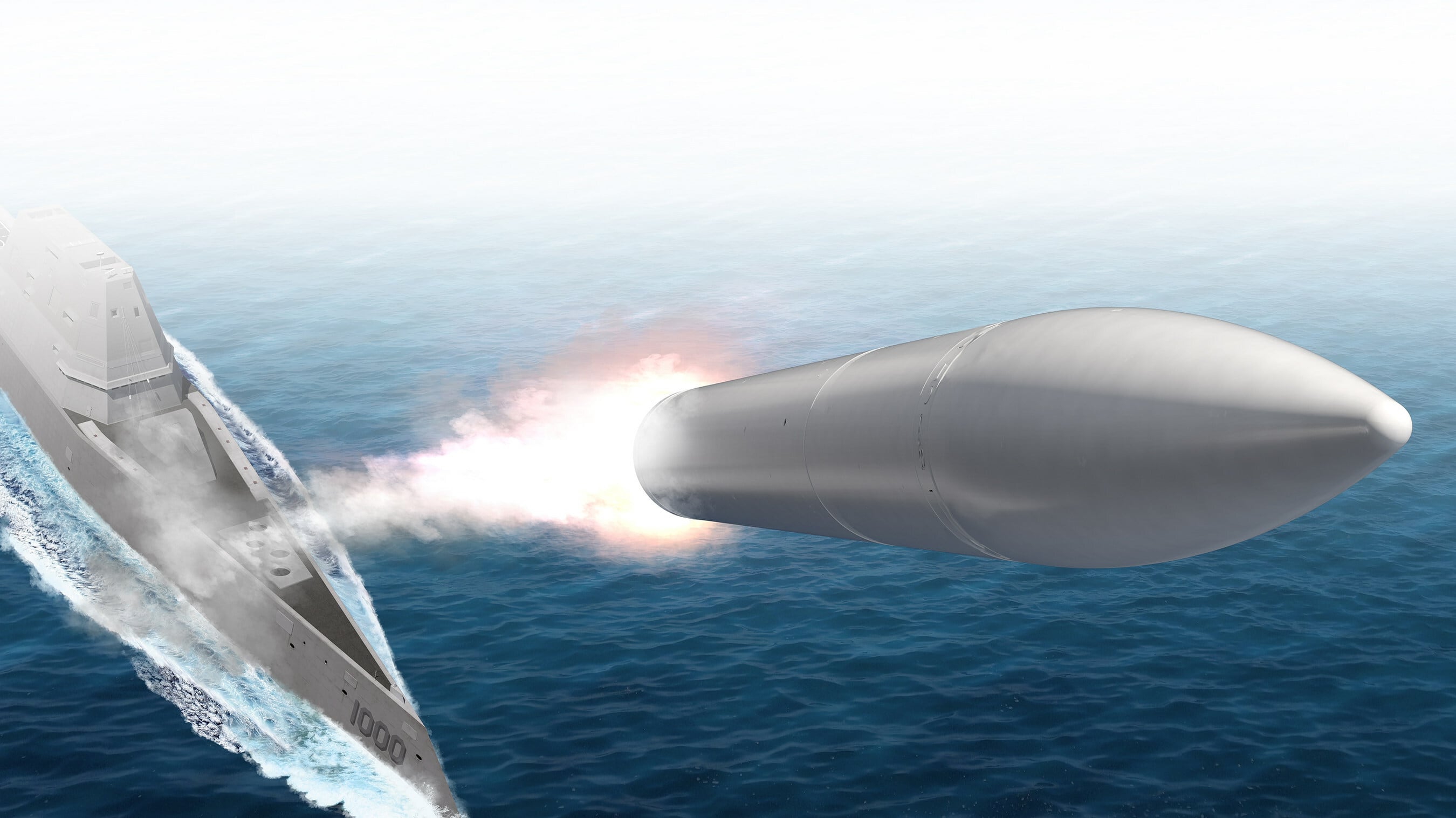This article has been corrected to state that the Virginia-class submarine will leverage the same launcher and weapon control system as the Zumwalt-class destroyer but will require additional integration and testing to create a sub-launched hypersonic missile capability.
WASHINGTON — Lockheed Martin will have a ship-based hypersonic missile launcher ready for flight tests next year, the company said, as part of the development work covered by a contract awarded Feb. 18.
Through a collaboration between the Army and the Navy, the hypersonic missile itself is already in flight tests, which will continue this year ahead of the Army forming its first hypersonic missile battery later in 2023. The Army has a basic truck-towed launcher and a standard weapon control system, developed through a previous weapon systems integration contract.
Now, according to Steve Layne, vice president of Hypersonic Strike Weapon Systems at Lockheed Martin, last week’s $1.2 billion contract award will use the progress so far to create a sea-based hypersonic capability.
Lockheed Martin will develop a new launcher for the Zumwalt-class destroyer, the weapon control system will be adjusted for the maritime environment, and a subsequent round of flight tests will evaluate the changes that turn the basic hypersonic weapon system into the Navy’s Conventional Prompt Strike capability.
Layne said Lockheed Martin, the Navy and the rest of the industry team are more than a year into developing the ship-based launcher.
“We’re mid-way through that development phase right now,” he said in a Feb. 21 interview. “We’ve done a lot of sub-scale and full-scale testing and proofing on that capability, and more to follow as we move through 2023.”
That development work this year will lead to “a flight test campaign next year.”
In November, Vice Adm. Johnny Wolfe, the head of the Navy’s Strategic Systems Programs office, said the ship-based launcher would require pressurized air to shoot the weapon out of the launcher to a great enough height to allow the missile to light off without torching the ship deck below it. He said early Navy testing had already shown this was possible.
Even as Lockheed Martin is working on the launcher, the weapon control system and more, Ingalls Shipbuilding is on contract to modify destroyer Zumwalt, so the futuristic-looking ship will be prepared to receive these new capabilities during a 2025 refit.
Ingalls Shipbuilding President Kari Wilkinson told reporters last month the Navy still hadn’t finalized the statement of work for the ship refit, as the sea service weighs how extensive a job it may be to install this new weapon onto Zumwalt and sister ships Michael Monsoor and Lyndon B. Johnson.
Layne said the previous hypersonic missile contract covered development and testing of the basic weapon system, as well as missile deliveries to the Army’s first batteries, while this month’s contract includes the development work, as well as the delivery of missiles for use on Zumwalt destroyers and missiles for Army batteries that will be established later in the fielding process.
The Navy will need to award a third contract later this decade to cover the development of a submarine-launched hypersonic missile capability, Layne said. In this case again the missile will be common with the Army, and the launcher and weapon control system will match what’s on Zumwalt, but the submarine-launched capability will need additional integration and testing. This future contract will also cover additional missile deliveries.
Megan Eckstein is the naval warfare reporter at Defense News. She has covered military news since 2009, with a focus on U.S. Navy and Marine Corps operations, acquisition programs and budgets. She has reported from four geographic fleets and is happiest when she’s filing stories from a ship. Megan is a University of Maryland alumna.




